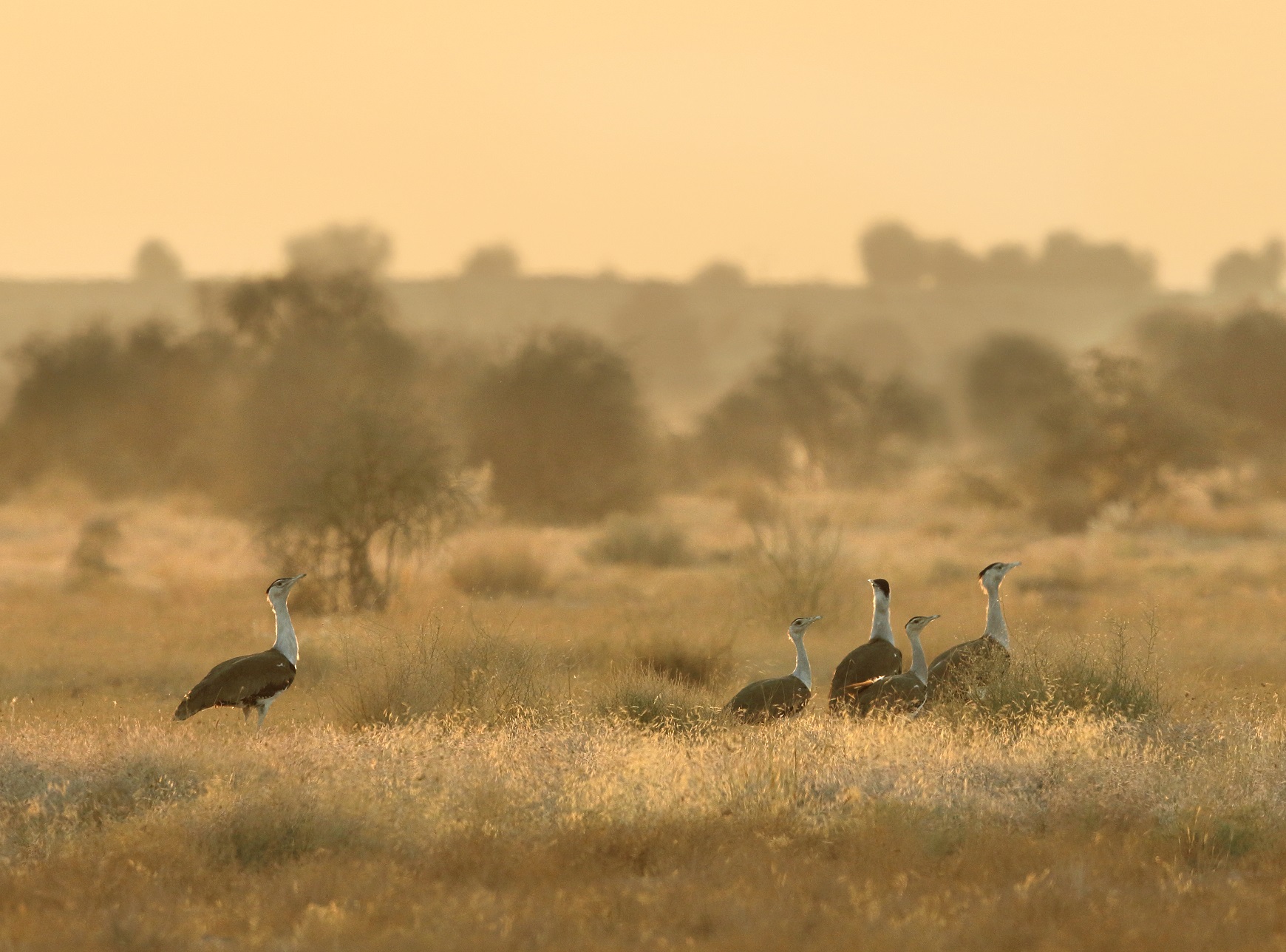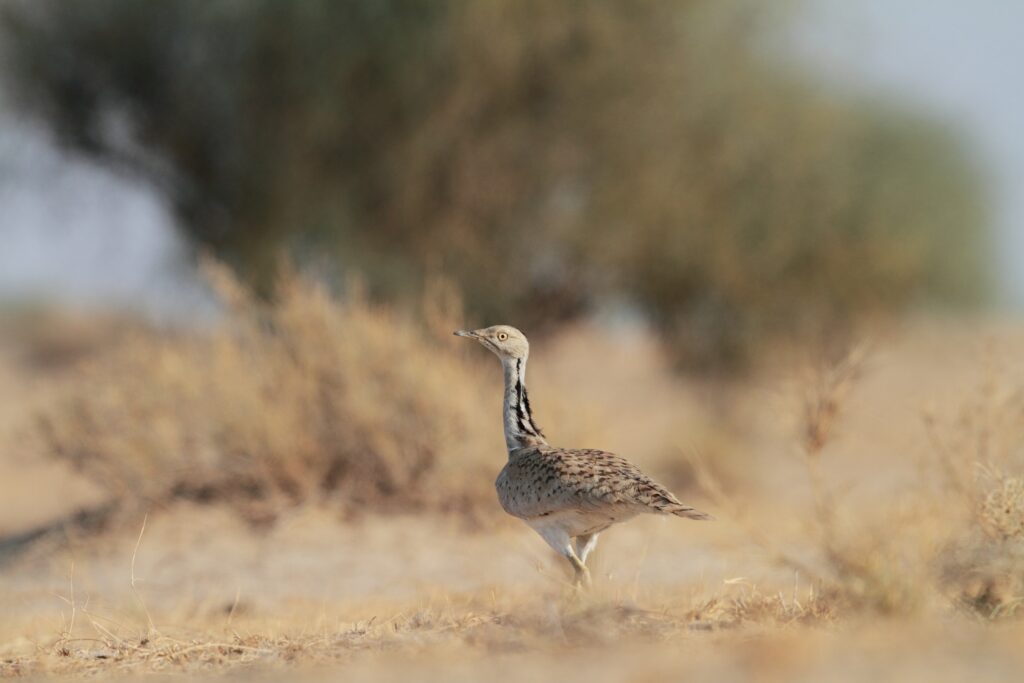Covering an area of 3162 square kilometres, the Desert National Park or DNP is one of the largest national parks in India. It is spread over two districts of Western Rajasthan – Jaisalmer and Barmer. This is largely a barren and sandy desert landscape with thorny bushes as the major vegetation. At least, 60 species of mammals, 8 species of amphibians, 51 species of reptile are known from the Thar desert area.

The Thar desert is one of the smallest deserts in the world, but it harbours a wide array of flora and faunal species due to its unique geo-climatic features. It is a low-lying land with extreme hot and arid climate, and it experiences very low rainfall (less than 100 mm). It is the only place where Rajasthan State Bird (Great Indian Bustard, locally known as Godawan), State animal (Chinkara, Gazella bennetti) and State tree (Khejri, Prosopis cineraria) and State flower (Rohida) are found naturally


The DNP is the most important site for the long-term survival of the globally threatened Great Indian Bustard and other endemic fauna and flora. Other birds of significance include the endangered Oriental White-backed vulture Gyps bengalensis and Long-billed Gyps indicus, Stoliczka’s Bushchat Saxicola macrorhyncha, Green Munia Amandava Formosa, and MacQueen’s or Houbara Bustard Chlamydotis maqueeni.

Thar has representatives of Palaearctic, Oriental and Saharan elements and is an outstanding example of geological history representing the different stages of evolution. It also has fossils dating back to the Jurassic Period (180 mya) indicating hot and humid climate characterised by dense forests. The fossilised remains of these 180 million-year-old forests are preserved in Wood Fossil Park at Akal, located 17 km from Jaisalmer, in the outskirts of the Desert National Park. Due to these unique attributes, there has been efforts to get DNP in the UNESCO World Heritage List. The best time to visit the DNP is in the winter and it is best accessed from the city of Jaisalmer at the western corner of Rajasthan.
Pictures are contributed by Dr Govind Sagar Bharadwaj, who is a senior Indian Forest Service Officer and a keen wildlife photographer, traveller and writer. He has been associated with the Desert National Park for many years and co-authored (with Asad R Rahmani) an excellent book on the subject – Desert National Park: A Jewel in the Vibrant Thar https://www.amazon.in/Desert-National-Park-Jewel-Vibrant/dp/8194884217